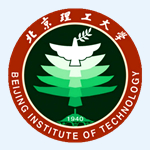|
| Research Interests |
| Robotic non-destructive testing system |
| Function Summary |
| Robotic non-destructive testing (NDT) system consists of the scanning institution, which is based on the robotic manipulator and inspects those specimens with ultrasound, electromagnetism and laser ultrasonic methods. As an automatic NDT system, it can inspect those fatigue cracks, unstick, which located in the surface layer of complex structures, as well as the flaws in the specimen such as internal cavities, delamination, inclusions and so on. Moreover, some character such as the porosity of complex structure, residual stress and the density distribution can also be measured by the robotic NDT system. |
| When it comes to the defects located on the surface layer of specimen, the eddy current probe is used, and the defects on the near surface of those conducting materials could be discriminated based on the sensitivity of current signals, which excited by the eddy current coil when the probe approach to the conducting specimen. On the other hand, the ultrasonic NDT and laser ultrasonic NDT are used for those inner defects of test object, the focused ultrasonic probe and the surface wave probe are used in order to inspect those inner defects in the specimen. |
| The NDT system can inspect those arbitrarily specimens with complex geometric shape quickly, with a high accuracy and imaging real-time, when the water coupling reflection method / eddy current method is used, with the help of the robot which has a high repeating accuracy and flexibility, therefore, the system has a bright prospect to be widely used for NDT application apply to those complex structures in the aerospace, shipping, vehicle engineering. |
| Technical features |
| Real-time control by the high-end robot manipulator, high inspection accuracy, inspect fast, flexibility |
| Full wave database is acquired and saved, test result presents a C-scan imaging for any depth interesting region |
| Peak value imaging is used, several physical character can be observed and analysis by the NDT system |
| Visual display, show the inner defects with a large-scale and fast scanning speed. |
 |
| Robotic non-destructive testing system |
| Specifications |
The minimum distance between the sample points: 0.05mm
The max scanning speed: 20mm/s
The highest sample frequency: 250MHz
The minimum equivalent diameter of defects: 0.15mm |
| Technical principle |
| When it comes to the ultrasonic NDT for those specimens with curved surface, the probe should be adjusted and track the test surface in order to guarantee the energy of ultrasound is high enough to transmit in the specimen. When the curvature of test surface changes, the orientation of specimen grasped by the robotic end effector should be adjusted, with the help of the trajectory planning, therefore the ultrasonic incidence angle is overlap with the normal vector of test surface, so that the energy attenuation could be reduced in the process of transmitting. |
| The distance between the current probe and the test object should be less than 0.5mm when the electromagnetic testing is carried out, in this case, the lift-off effect can be reduced. Meanwhile, the character of defects located on the surface could be obtained by the signal processing such as the noise reduction and filtering. |
| The robotic scanning NDT system has solved those questions in the industrial application and has the capability to inspect arbitrarily specimen with complex shapes, the core-component technology has also been mastered such as robotic trajectory planning and motion control for complex structures, acquisition of signal synchronize between the ultrasonic / eddy current information and the robotic position, signal process and data visualization etc. |
| |
| |
|
|

